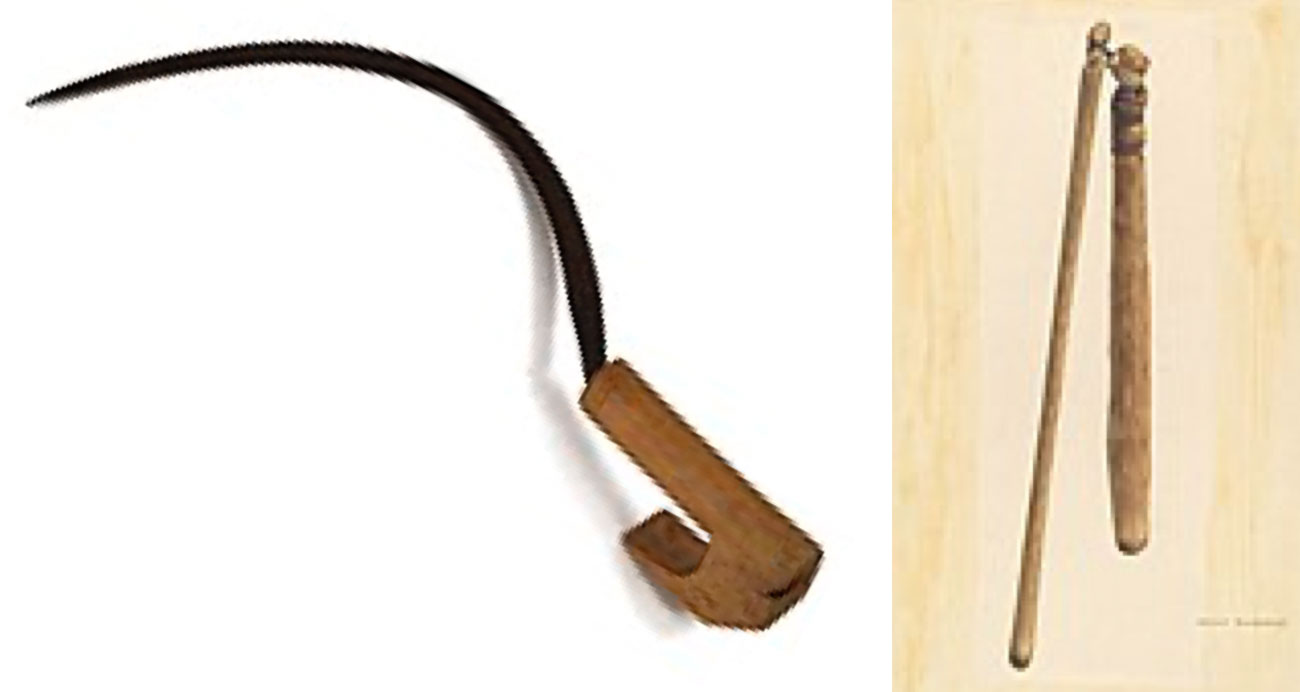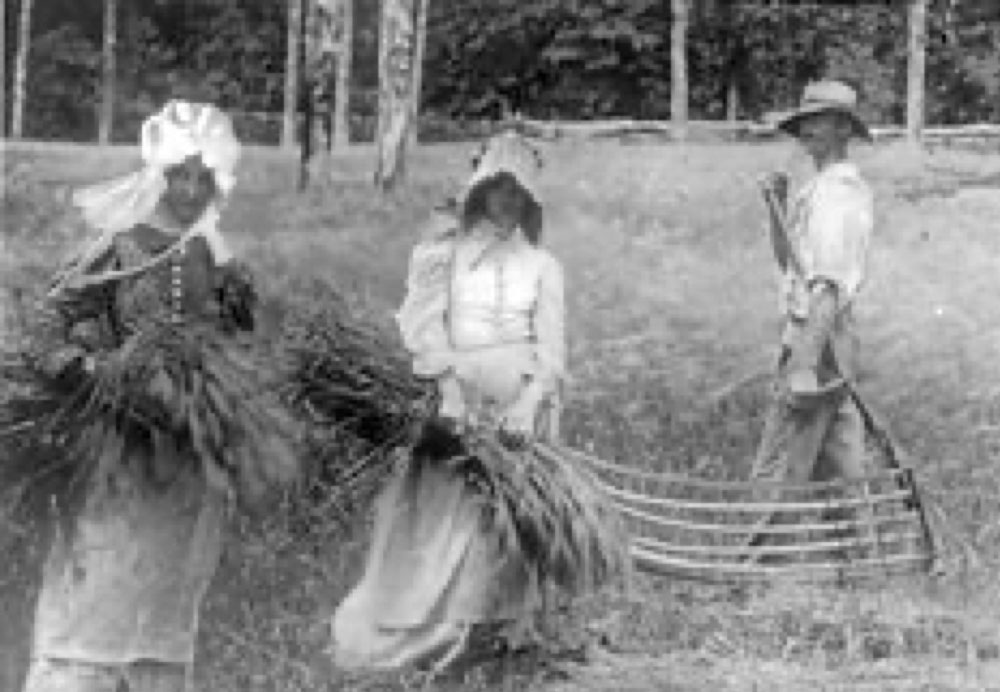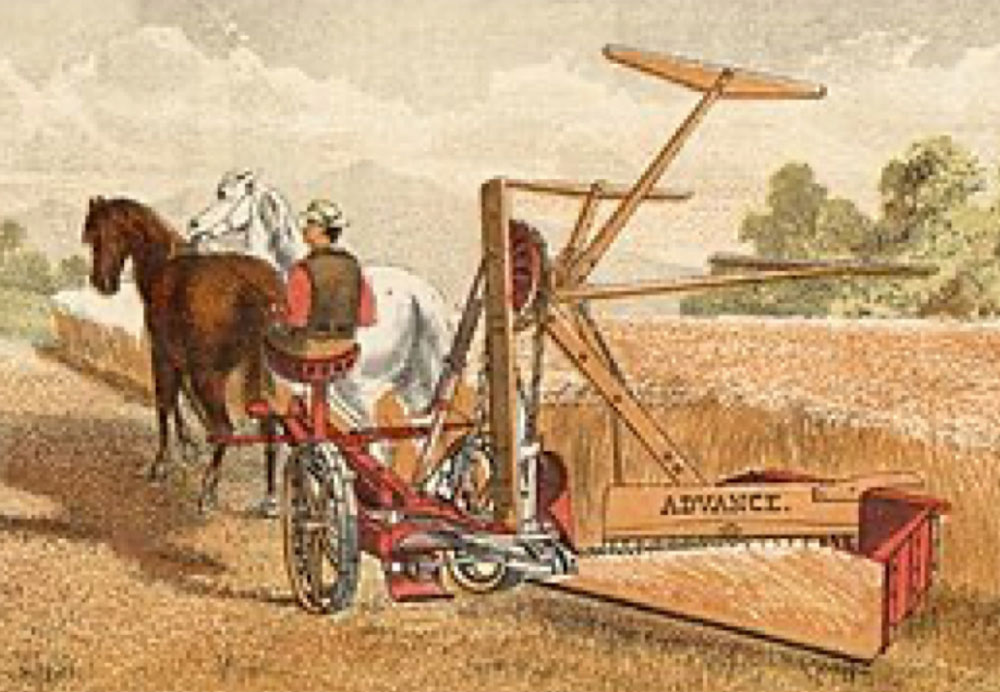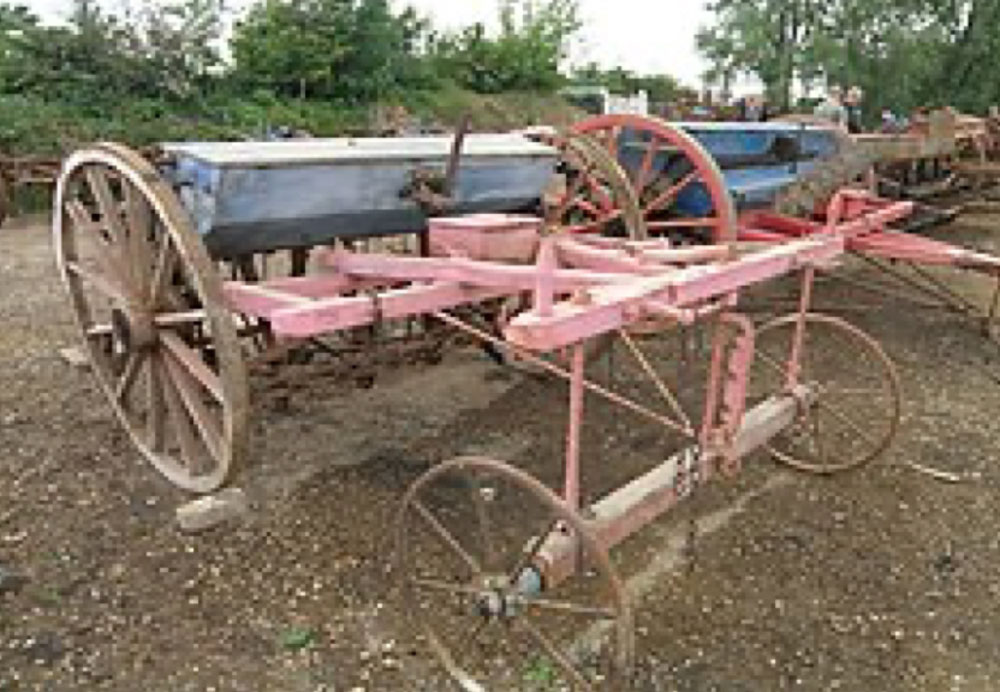Farm Machinery Changes
Highlights of American Farm Machinery and Technology Changes from 1776–1990
Only a few centuries ago, farming was very different and used very little technology. The agricultural revolution and inventions changed farming so that far less manual labor is needed to feed the world today than in previous eras.
16th–18th Century: Oxen and Horses
This period featured the use and emergence of such farm equipment as oxen and horses for power, crude wooden plows, hay and grain cutting with a sickle, and threshing with a flail. All sowing was done by hand and cultivating by hoe.
1776–1799: The Cradle and Scythe
The farm technology revolution began in this period.
1701: Jethro Tull invented the seed drill (aka seeder)
1790s: The introduction of the cradle and scythe;
- 1793: Invention of the cotton gin (separated cotton fibers from their seeds);
- 1797: Patenting of the cast-iron plow by Charles Newbold (replaced the heavy iron-clad wooden plow).
Early 1800s: The Iron Plow
- 1819: Jethro Wood patented the iron plow with interchangeable parts;
- 1819–25: The establishment of the U.S. food canning industry.
1830s: The McCormick Reaper
- 1834: The horse-drawn McCormick reaper was patented (a straight blade protected by guards was linked to a drive wheel; as the drive wheel turned, the blade moved back and forth in a sawing motion, cutting through the stalks of grain; the cut grain stalks then fell onto a platform and were collected with a rake by a worker. The device increased average production from two or three acres a day to ten acres a day).
McCormick Reaper Advertisement 1876 (see image)
- 1837: John Deere and Leonard Andrus began manufacturing steel plows—the plow was made of wrought iron and had a steel share that could cut through sticky soil without clogging.
- 1837: Hiram A. and John A. Pitts patended a practical threshing machine (to remove a plant’s grain from its stalks and husks, thus “separating the wheat from the chaff”).
1840s: Commercial Farming
- 1841: A practical grain drill was patented (for planting seed at a controlled depth and in specified amounts)
Smyth grain drills - geograph.org.uk (see image)
- 1842: The first grain elevator was used in Buffalo, New York.
- 1844: A practical mowing machine was patented.
- 1847: Irrigation began in Utah.
- 1849: Mixed chemical fertilizers were sold commercially.
1850s: Self-Governing Windmills
- 1850–70: Expanded market demand for agricultural products brought the adoption of improved technology and increases in farm production.
- 1854: The self-governing windmill was perfected.
- 1856: The two-horse straddle-row cultivator was patented.
1860s–mid-1870s: First American Agricultural Revolution
- 1860-69: Change from hand power to horses.
- 1865–75: Gang plows and sulky plows came into use.
- 1868: Steam tractors were tried out.
- 1869: The spring-tooth harrow or seedbed preparation appeared.
1870s: The Age of Barbed Wire
- 1870s: The deep-well drilling was first widely used.
- 1870s: Silos came into use to store grain.
- 1874: Glidden barbed wire was patented.
- 1874: The availability of barbed wire allowed fencing of rangeland, ending the era of unrestricted, open-range grazing.
1880s–1890s: Mechanization
- 1880: William Deering put 3,000 twine binders on the market.
- 1884–90: The horse-drawn combine was used in Pacific Coast wheat areas.
- 1890-95: Cream separators came into wide use.
- 1890s: Agriculture became increasingly mechanized and commercialized
1900–1910: Diversification of Crops
- 1890-1910: George Washington Carver, director of agricultural research at Tuskegee Institute, pioneered in finding new uses for peanuts, sweet potatoes, and soybeans, thus helping to diversify Southern agriculture.
1910s: Gas Tractors
- 1910-1915: Open-geared gas tractors came into use in areas of extensive farming.
- 1914: The cultipacker appeared on the market to crush dirt clods, remove air pockets, and press down small stones to form a smooth, firm seedbed.
- 1915–20: Enclosed gears were developed for the tractor.
- 1918: The small prairie-type combine with an auxiliary engine was introduced.
1920s: A New Light Tractor
- 1920–40: The gradual increase in farm production resulted from the expanded use of mechanized power.
- 1926: The cotton-stripper was developed for the High Plains.
- 1926: A successful light tractor was developed.
1930s: Increased Wheat Production
- 1930–39: The all-purpose, rubber-tired tractor with complementary machinery came into wide use.
1940s: Second Agricultural Revolution
- 1940-49: Sea change from horses to tractors, including the adoption of a group of technological practices
- 1941–1945: Frozen foods were popularized.
- 1942: The spindle cotton picker was used commercially.
1950s: Cheap Fertilizer
- 1954: The number of tractors on farms exceeded the number of horses and mules for the first time.
- Late 1950s–early 1960s: Anhydrous ammonia was increasingly used as a cheap source of nitrogen, spurring higher yields.
- Roughage grinders hit the market.
1960s: Federal Aid for Irrigation
- 1965: Ninety-nine percent of sugar beets were harvested mechanically.
- 1965: Federal loans and grants for water and sewer systems began.
- 1968: Ninety-six percent of cotton was harvested mechanically.
1980s–90s: Sustainable Agriculture
- By the 1980s, many farmers began using no-till or low-till methods to curb erosion.
- 1989: After several slow years, the sale of farm equipment rebounded
- 1989: More farmers began to use low-input sustainable agriculture techniques to decrease chemical applications
_____________
Source: Bellis, Mary. "American Farm Machinery and Technology Changes from 1776–1990." ThoughtCo, Feb. 6, 2021, thoughtco.com/american-farm-tech-development-4083328.

Sickle and Flail

Cradle

Schythe

Reaper

Grain Drill